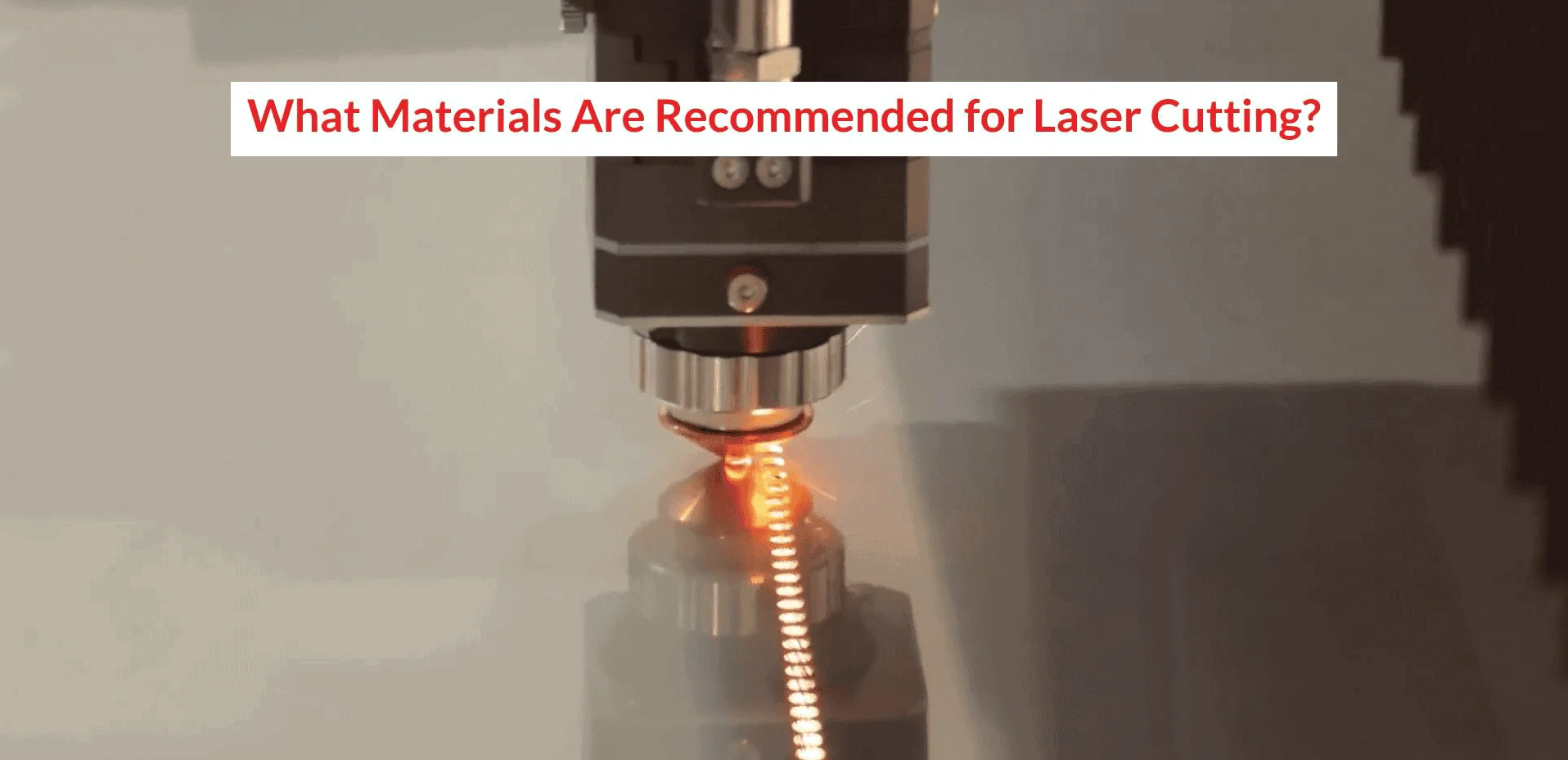What Materials Are Recommended for Laser Cutting?
Choosing the Best Materials for Laser Cutting
Thanks to recent advancements in laser cutting, it is now possible to cut even “difficult” materials with precision. The simplest machines can now cut large quantities of thin sheets or engrave any number of materials. Moderately powered laser cutters can be used on thin aluminum sheets, while more challenging materials like stainless steel can benefit from using more advanced machinery and cutting techniques. Today, we’re looking at the best materials to laser cut and their common uses.
What Materials Are Recommended for Laser Cutting?
Laser cutting is a precise, efficient fabrication method used to handle a variety of materials. Understanding the compatibility of these laser-cutting materials with different equipment and cutting methods is key to achieving quality results.
Metal
Metals are strong and durable, making them suitable materials for a range of laser cutting and engraving project needs. While different types of lasers can offer their own advantages, fiber lasers are generally the best option for cutting metals, as they create a precise, narrow beam that can cleanly slice through metal without excessive heat spread. These can produce precise, clean cuts during fabrication, lending to industrial applications or more intricate designs.
Steel
Steel, particularly carbon steel, is the most common material choice for laser cutting. This material is suitable for many applications, from structural components to delicate automotive parts. Carbon steel is cut using fiber lasers, which can easily manage thicker sheets. High-power fiber lasers, for example, can cut carbon steel in thicknesses at a common maximum output of 100 mm or 3.93 inches. Using an oxidation melting cutting mechanism allows operators to better control the slit of carbon steel, enabling cuts as fine as 0.1 mm.
Steel also comes in a few varieties, each with specific uses:
- Cold Rolled Steel. Known for its smooth finish, colled roll steel is easy to work with and widely used in laser cutting for applications requiring precision.
- Hot Rolled Steel. This is a stronger steel material, making it suitable for projects with less critical surface finish needs.
- Galvanized Steel. This steel is highly resistant to corrosion. It’s frequently used in outdoor applications to promote durability in different structures.
Stainless Steel
Stainless steel is a highly versatile material, with laser-cutting applications ranging from automotive parts to advertising signage. Manufacturers can use fiber laser machines to efficiently cut stainless steel sheets and tubing. These machines give operators better control over the cutting process, significantly reducing the heat-affected zone of the cutting edge. This helps maintain the material’s corrosion resistance and mechanical properties while minimizing heat impact on the surrounding metal.
Aluminum
Aluminum is lightweight and corrosion-resistant, which is extremely valuable in aeronautics and automotive applications. However, reflective materials like aluminum can deflect laser beams due to their lower absorption rate. Small cracks can also appear on the surface when cutting certain aluminum alloys. Using fiber lasers allows operators to adjust power levels during the cutting process. Auxiliary gases such as nitrogen can be used to blow away molten material during the laser cutting process and protect the aluminum’s characteristic silvery sheen.
Brass and Copper
Laser-cut copper and brass are known for their high reflectivity and thermal conductivity, making them ideal for use in heat exchangers and various electronics. CO2 lasers are less effective at cutting reflective materials like these. Fiber lasers produce a wavelength of about 1.06 – 1.08 µm, which focuses down to a much smaller point. This results in a greater power density, allowing these lasers to cut brass and copper materials with ease.
At high power densities, copper and brass quickly reach a molten state, enabling more efficient cutting. Using nitrogen as an auxiliary gas helps maintain a clean cut without requiring oxidation.
Titanium
Titanium’s versatility and strength make it an ideal laser-cutting material for aerospace, medical, and other high-performance applications. Titanium responds well to reactive laser-cutting machines, which can convert focused laser beams into heat energy. Argon is ideal, but nitrogen can also be used as an auxiliary gas to create a rapid chemical reaction to increase cutting speeds.
Controlling the reaction is crucial to avoid oxidation at the edges. Alternatively, using air as the auxiliary gas can help prevent burning and ensure the cut edges remain clean.
PVC Coatings for Stainless Steel
Stainless steel may require a PVC coating to protect the surface during manufacturing. This PVC protects polished and finished stainless steel in certain applications, such as weatherproof paneling. However, these coatings can also emit toxic chemical fumes during cutting, posing a potential hazard to operators and the environment. In order to work with PVC-coated stainless steel, safety features such as air filtration and proper ventilation are necessary.
Laser Cutting at Evans Tool & Die
While numerous materials benefit from laser cutting, it’s important to implement specific techniques and equipment for optimal results. At Evans Tool & Die, we specialize in precision laser cutting for projects across many different industries. Our ISO 9001:2015 certification and long-running history of customer satisfaction reflect our commitment to quality and excellence. Our experienced team is here to assist with all aspects of your project, from design to assembly.
If you’re looking to streamline your production and supply chain, contact us today to receive a quote on your next laser-cutting project.


